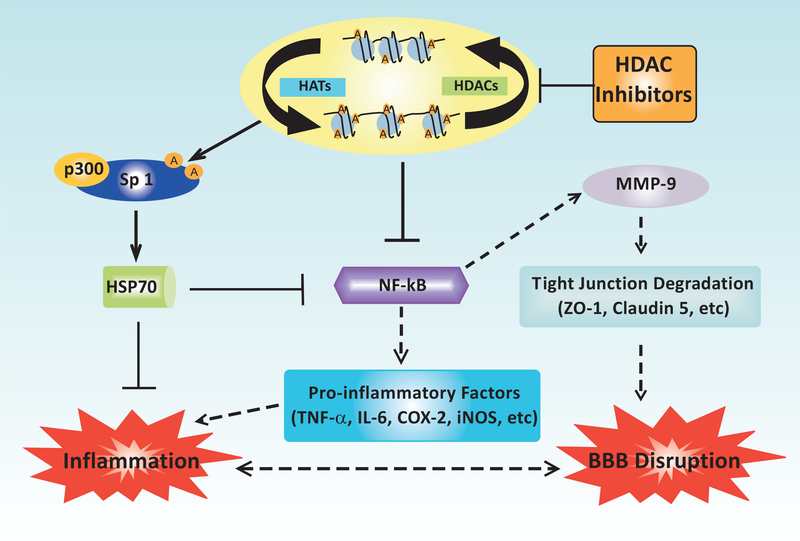Fig. (2).
Schematic diagram depicting the effects of HDAC inhibition on inflammation and BBB integrity in ischemic stroke models. Inhibition of HDAC activity results in multiple mechanisms that promote BBB integrity and anti-inflammation. HDAC inhibitors enhance the expression of the neuroprotective molecule HSP70, likely through increasing Sp1 acetylation, enhancing the association between Sp1 and the HAT p300, and promoting the recruitment of p300 to the HSP70 promoter. HSP70 in turn inhibits the activation of NF-κB which reduces the expression of pro-inflammatory factors such as TNF-α, IL-6β, COX-2, and iNOS, thereby suppressing inflammatory damage to both brain tissue and the BBB. NF-κB inhibition induced by HDAC inhibitors also contributes to BBB integrity via tight junction preservation. Reduced NF-κB activation leads to the downregulation of MMP-9, a matrix-degrading enzyme induced after ischemia, ultimately preventing the degradation of tight junction proteins such as ZO-1 and claudin 5. BBB preservation reduces the number of infiltrating immune cells, thereby concurrently suppressing neuroinflammatory damage. Lines with arrows represent stimulatory connections; lines with flattened ends represent inhibitory connections. Dashed lines represent pathways with reduced activity as a result HDAC inhibition. A: acetylation.

